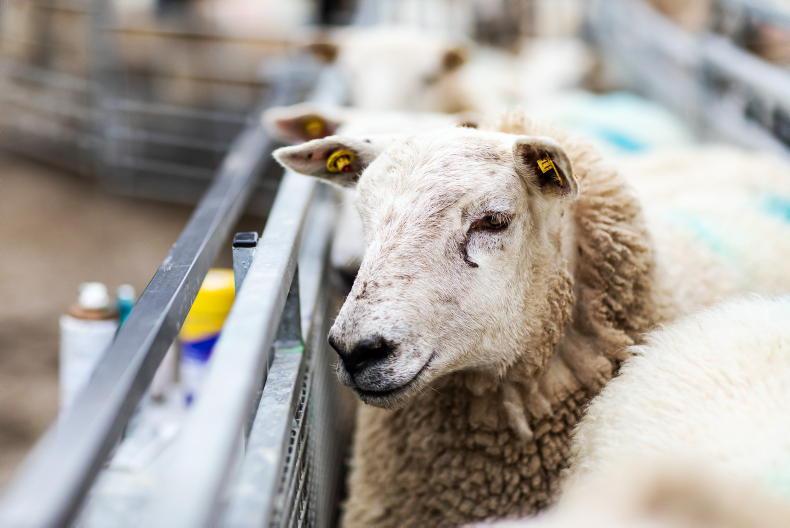Stemming the development and spread of antimicrobial resistance (AMR) is a major challenge facing human and animal health. The gravity of the challenge was outlined by Caroline Garvan, senior superintending veterinary inspector at the Department of Agriculture, at the Sheep Expo 2024 conference held at the Bloomfield House Hotel in Westmeath.
Patrons at the event sponsored by Irish Country Meats, Elanco, FBD and MSD Animal Health and organised by Bord Bia, Department of Agriculture, the Irish Farmers Journal, Sheep Ireland and Teagasc, were told that a change of behaviour and thinking is required in terms of antibiotic use.
Describing AMR as a silent pandemic, Garvan outlined that, in 2019, almost 5m deaths were associated with drug-resistant infection with 20% of these being children. The figure in the EU is 35,000 deaths occurring annually due to AMR, along with a yearly cost of €12bn.
To recap on what AMR is, it is the failure of an antibiotic to treat an infection.
There are a number of practices, both in animal and human health, that increase the risk of resistance developing. These include:
Garvan gave an example of how the use of antibiotics in agriculture is linked to human health. If animals receive antibiotics that do not treat the infection and develop-resistant bacteria in their system, such drug-resistant bacteria can remain on the meat of slaughtered animals.
Bacteria
If the meat is not properly handled or cooked, the bacteria can spread to humans. Drug-resistant bacteria in animal faeces or urine can also remain on crops, travel into water systems and gain access to the human digestive system.
Antibiotic residues are not to be confused with antibiotic resistance.
Residues are traces of antibiotics and associated metabolites that remain in meat and milk; for example, from animals that have been treated with antibiotics.
Observing withdrawal periods prevents residues entering the food chain but has no effect on the development of AMR.
It is not just animals that pose a risk of spreading AMR. It can also be spread in a healthcare environment, for example, where resistant germs spread directly to other patients or indirectly on unclean hands of healthcare providers or contaminated surfaces, equipment, etc.
The industry’s code of good practice regarding the responsible use of antimicrobials on sheep farms was highlighted as a good resource to combat AMR. Key parameters include:
A comment made by some farmers highlighted availability issues with many vaccines over the last year.
Garvan stated that, where possible, the Department will sanction emergency licences for comparable vaccines and work with vaccine manufacturers to maintain availability.
The Department of Agriculture policy regarding antibiotic use is that critically important antimicrobial (HP-CIAs), which are medicines of last resort in human health in particular, should not be used as first-line treatments in animal health.
These HP-CIAs should only be used when there are no effective alternative antimicrobials available and their use should be based on culture and susceptibility testing, where possible.
New European and national legislation, the Veterinary Medicinal Products Regulations 2024, has been introduced and this will bring changes to the manner in which farmers can access both antimicrobials and antiparasitics.
Caroline Garvan summarised the new rules regarding antimicrobials and explained the new National Veterinary Prescription System (NVPS), which is expected to be mandatory from 13 January 2025. The NVPS will also be used to facilitate the prescribing of medicated feed.
The second significant change for flock health is that from June 2025 it is likely that all antiparasitics which include wormers, sheep dips, pour-ons, vaccines, etc, will require a prescription from a vet prior to their purchase. Garvan stated this is aimed at ensuring effective parasite treatments remain available. Prescriptions for antimicrobials will remain valid for five days, while a prescription for all other prescription-only medicines will remain valid for six months.
How does the NVPS work?
It is envisaged that the process for the NVPS will work as follows:
Farmers will also be able to get a paper prescription, if required, but it is expected that the electronic prescription will be more straightforward. There were questions at the Sheep Expo regarding who covers the extra cost of the process or what prescriptions might cost for antiparasitics.
Garvan said this is a commercial transaction between a vet and a farmer with the Department having no role outside of operating the database and ensuring veterinary medicines are used appropriately. She outlined that for antimicrobials there will not be significant change as such medicines are already prescription only.

